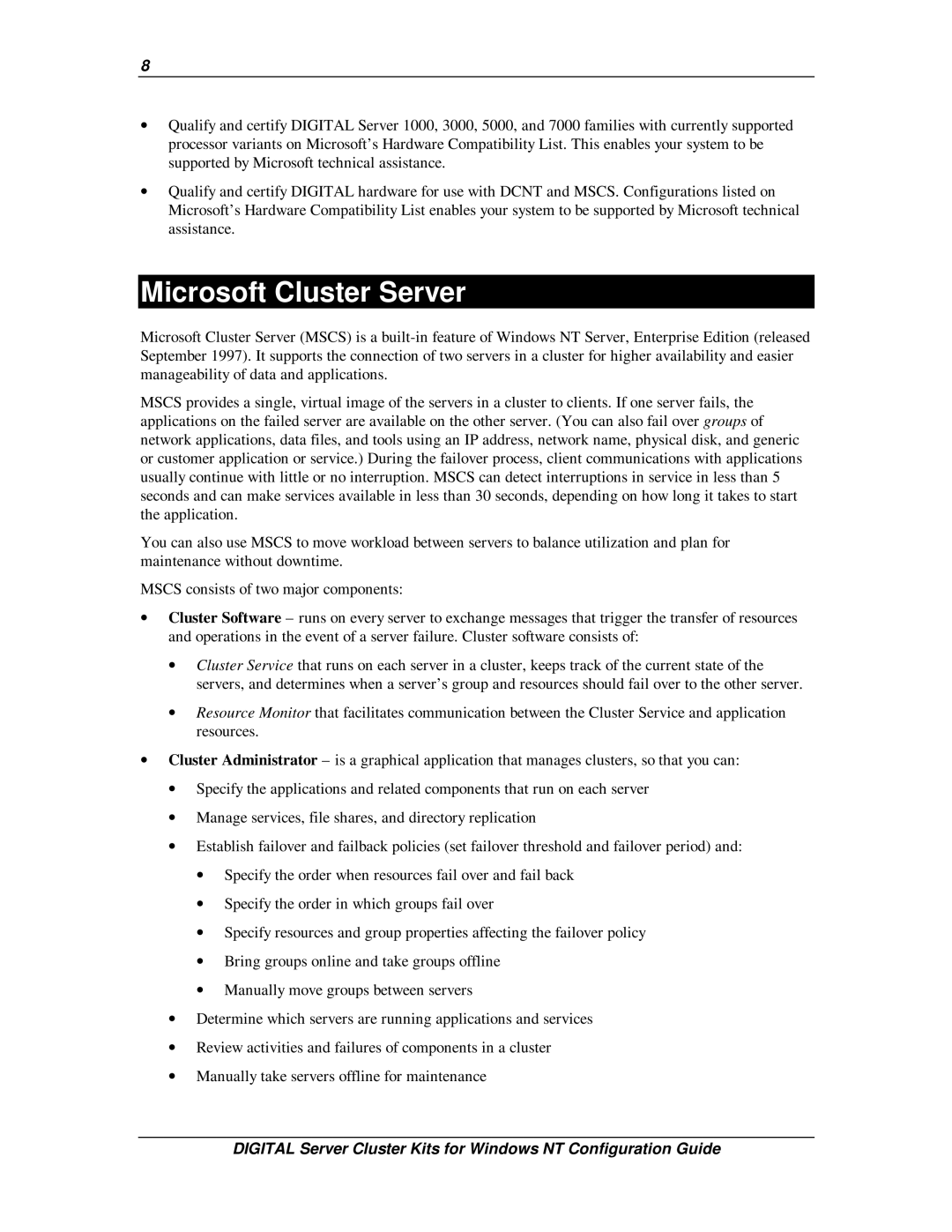
8
∙Qualify and certify DIGITAL Server 1000, 3000, 5000, and 7000 families with currently supported processor variants on Microsoft’s Hardware Compatibility List. This enables your system to be supported by Microsoft technical assistance.
∙Qualify and certify DIGITAL hardware for use with DCNT and MSCS. Configurations listed on Microsoft’s Hardware Compatibility List enables your system to be supported by Microsoft technical assistance.
Microsoft Cluster Server
Microsoft Cluster Server (MSCS) is a
MSCS provides a single, virtual image of the servers in a cluster to clients. If one server fails, the applications on the failed server are available on the other server. (You can also fail over groups of network applications, data files, and tools using an IP address, network name, physical disk, and generic or customer application or service.) During the failover process, client communications with applications usually continue with little or no interruption. MSCS can detect interruptions in service in less than 5 seconds and can make services available in less than 30 seconds, depending on how long it takes to start the application.
You can also use MSCS to move workload between servers to balance utilization and plan for maintenance without downtime.
MSCS consists of two major components:
∙Cluster Software – runs on every server to exchange messages that trigger the transfer of resources and operations in the event of a server failure. Cluster software consists of:
∙Cluster Service that runs on each server in a cluster, keeps track of the current state of the servers, and determines when a server’s group and resources should fail over to the other server.
∙Resource Monitor that facilitates communication between the Cluster Service and application resources.
∙Cluster Administrator – is a graphical application that manages clusters, so that you can:
∙Specify the applications and related components that run on each server
∙Manage services, file shares, and directory replication
∙Establish failover and failback policies (set failover threshold and failover period) and:
∙Specify the order when resources fail over and fail back
∙Specify the order in which groups fail over
∙Specify resources and group properties affecting the failover policy
∙Bring groups online and take groups offline
∙Manually move groups between servers
∙Determine which servers are running applications and services
∙Review activities and failures of components in a cluster
∙Manually take servers offline for maintenance
DIGITAL Server Cluster Kits for Windows NT Configuration Guide
